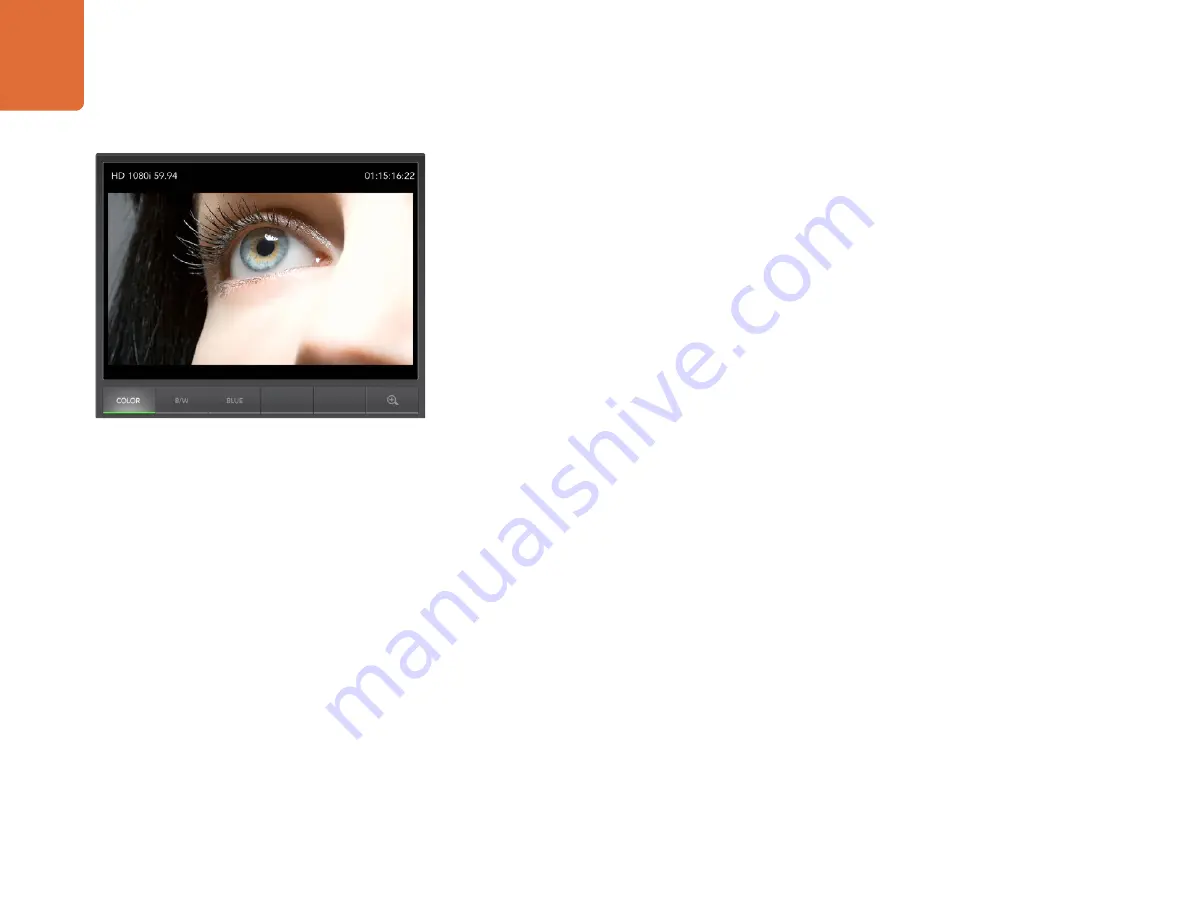
Using Blackmagic UltraScope
130
7. Picture Display
The Picture Display is a handy confidence monitor so you can see the video that is being received
by Blackmagic UltraScope. The Picture Display has three settings: COLOR, B/W (black & white) and BLUE
(Blue Only).
Set to COLOR or B/W depending on the needs of your facility. Black & white is popular for use in color-
correction studios so clients don’t get confused when seeing multiple color displays, and not understanding
which color display is the correct, color-calibrated display. You may wish to select B/W so there is only a
single, calibrated, color display in the room. The black & white display can also provide a useful visual
reference.
Blue Only is used with color bar test signals for setting hue on playback decks. When adjusting hue, make
sure all the blue bars are a constant brightness to attain the correct hue level.
Blue Only can also be used for evaluating noise levels in cameras and telecines. Blue has the least amount
of signal level, in a color video signal, and so is more susceptible to noise. The BLUE setting can provide a
good way to check on noise levels in a video signal.
The SDI and OPTICAL buttons are not used with ATEM Production Switchers which always use whatever
video and audio is routed to Aux 1. These buttons are used with the dedicated Blackmagic UltraScope
hardware which includes both SDI and optical fiber SDI connections.
The Picture Display will also decode RP-188 HD and VITC SD timecode information, from the SDI video
input signal, and display it on the right side of the display. If the timecode information is incorrect, check your
deck to ensure it is outputting the correct timecode signal encoded as VITC or RP188.
It is worth noting that some standard definition broadcast decks let you “re-stripe” the timecode track
independently of the VITC, which was encoded as part of the image. This meant the VITC could not be
changed without copying the video down another generation. Consequently some standard definition
decks had different timecode in the VITC to the normal LTC track on the SDI video output. It is always worth
checking master tapes if you think the displayed timecode is incorrect.
Lastly, the video standard is displayed on the left side of the Picture Display, so you can verify the video
standard, and confirm you’re monitoring the correct video feed.
Picture Display







































